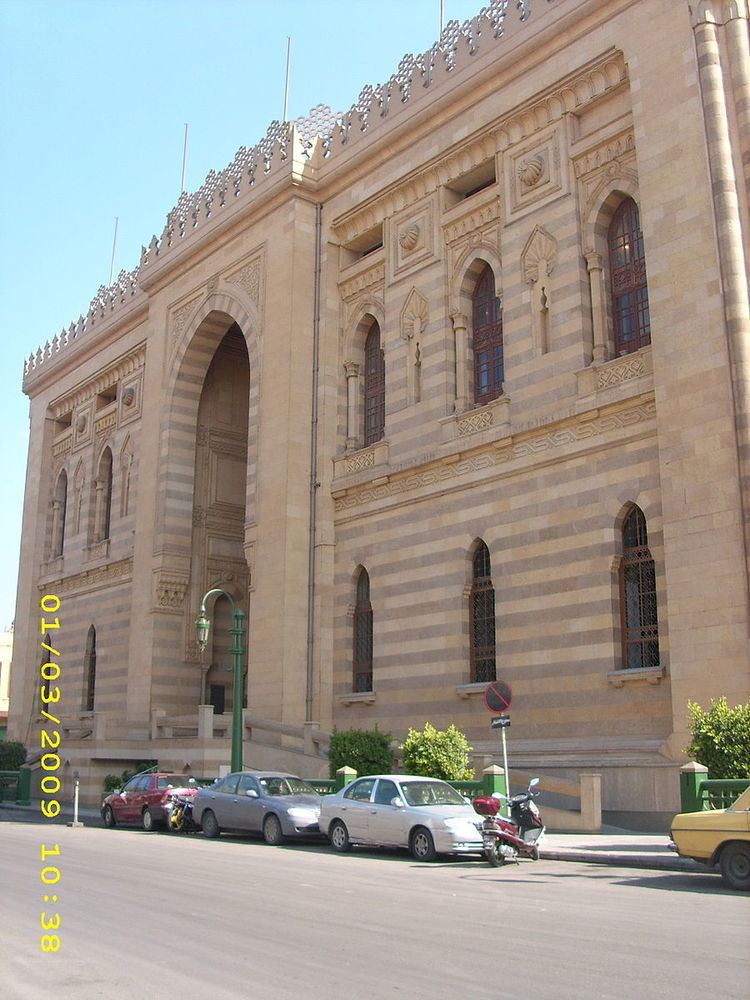Phone +20 2 25750886 | ||
 | ||
Address 121 Nile Corniche, RAMLET BOULAK، Boulaq, Cairo Governorate, Egypt Hours Open today · 8AM–2PMWednesday8AM–2PMThursday8AM–2PMFridayClosedSaturdayClosedSunday8AM–2PMMonday8AM–2PMTuesday8AM–2PM Similar Bibliotheca Alexandrina, Museum of Islamic Art - Cairo, Al‑Azhar Mosque, Abdeen Palace, Al‑Zahiriyah Library | ||
The Egyptian National Library and Archives (Arabic: دار الكتب والوثائق القومية; "Dar el-Kotob") in Cairo is the largest library in Egypt. The second largest are the libraries of Al-Azhar University and the Bibliotheca Alexandrina (New Library of Alexandria).
Contents
The National Library, the oldest government library, houses several million volumes on a wide range of topics. It is one of the largest in the world with thousands of ancient collections. It also contains a vast variety of Arabic-language and other Eastern manuscripts. The main library is a seven-story building in Ramlet Boulaq, a district of Cairo. The Egyptian National Archives are contained in an annex beside the building.
History
It was started in 1870 by a decree from Khedive Ismail through an initiative from Ali Pasha Mubarak, the education minister at the time. In its first decades the position of director were held by German Orientalists, most notable among them were Karl Vollers and Bernhardt Moritz.
Contents
Collections include a wide variety of manuscripts of the Qur'an, written on paper and parchment, with some in the early undotted Kufic script, other written by celebrated calligraphers. Of Egyptian Islamic materials, there is perhaps the outstanding collection of illuminated manuscripts of the Qur'an in the Mamluk text-hand, and in Trilinear and Rayhani hands. There are also collections of Arabic papyri from different sites in Egypt, some dating to the 7th century AD or earlier. The library is a mine of information on early Islamic Egypt's social and cultural life. Ancient Persian and Ottoman collections are also housed.
The library's great resources in manuscripts and documents include more than 57,000 of the most valuable manuscripts in the world. The manuscript collection covers a vast number of subjects, fully documented, dated, and compiled. It also houses a rare number of Arabic papyri. These are related to marriage, rent, and exchange contracts, as well as records, accounts of taxes, distribution of inheritance, etc. The oldest papyrus group dates back to the year AH 87 (AD 705); only 444 papyri from this collection were published.
The Library also has a large collection of medieval Arabic coins from as early as AD 696, which were published by Stanley Lane-Poole, Bernhardt Moritz and recently by Norman D. Nicol, Jere L. Bacharach and Rifa'at al-Nabarawy (1982).
Collections formed by Ahmed Taymour Pasha, Ahmed Zaki Pasha, Ahmed Tal'aat Bey and Mustafa Fadel all came to the National Library at the end of the 19th century.
